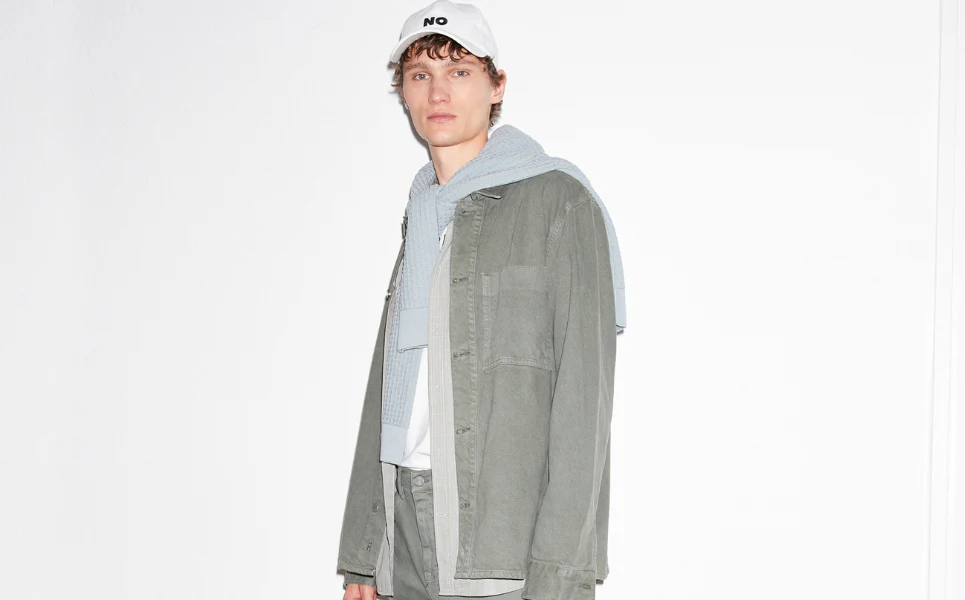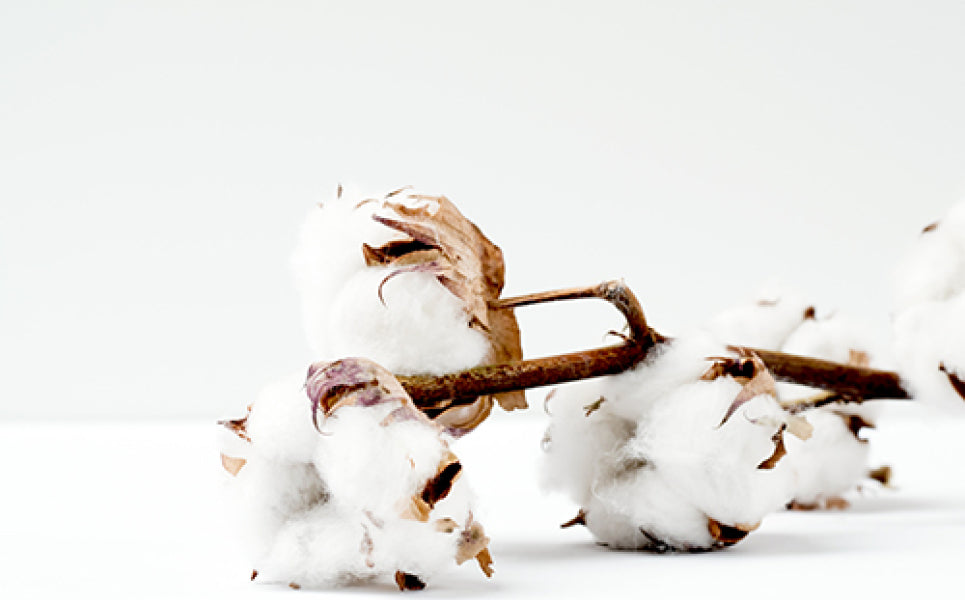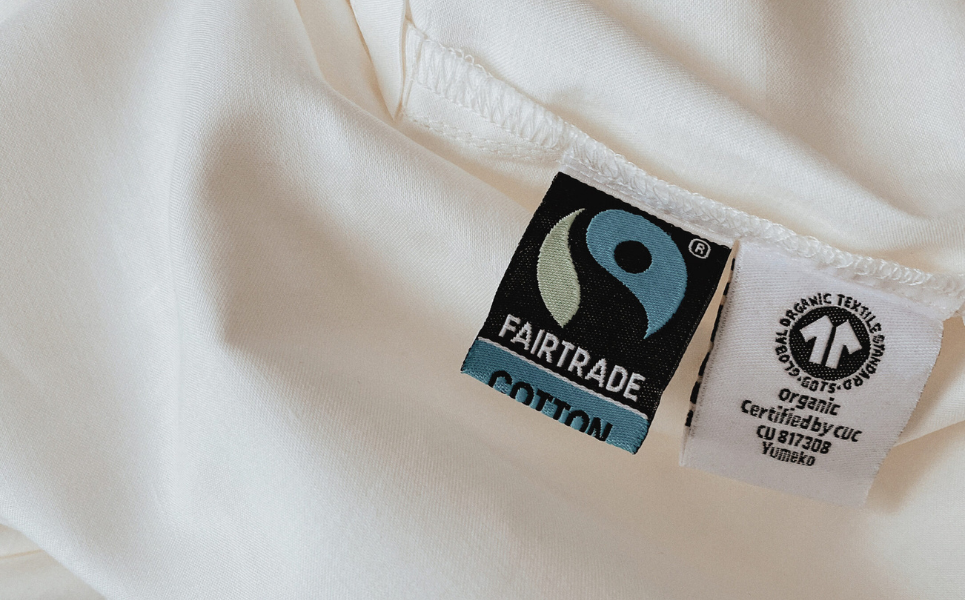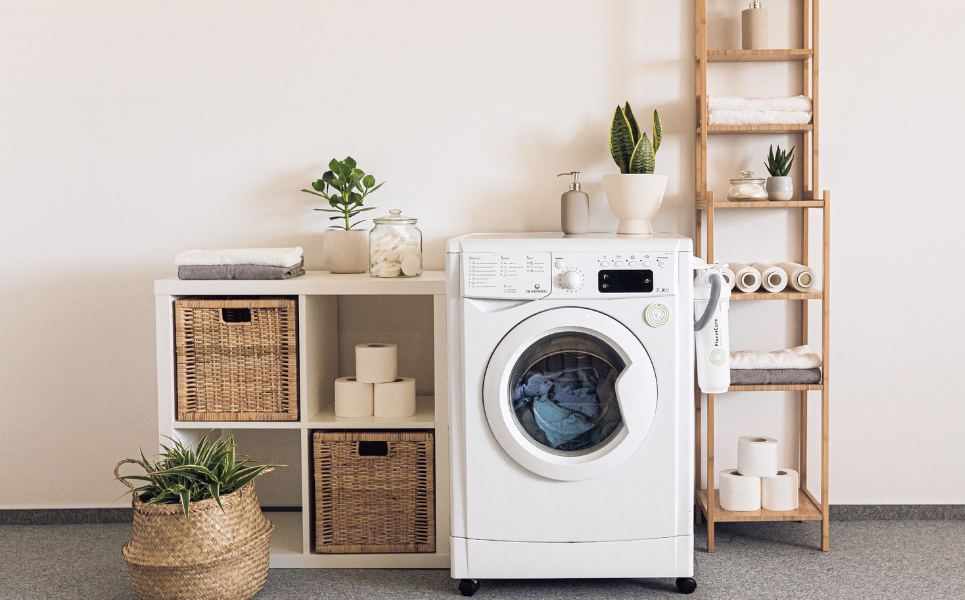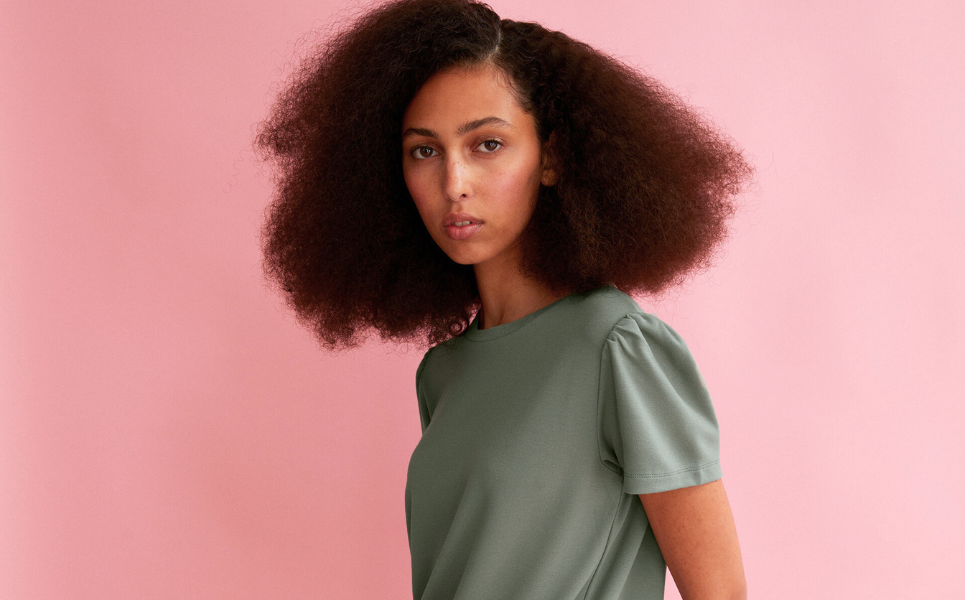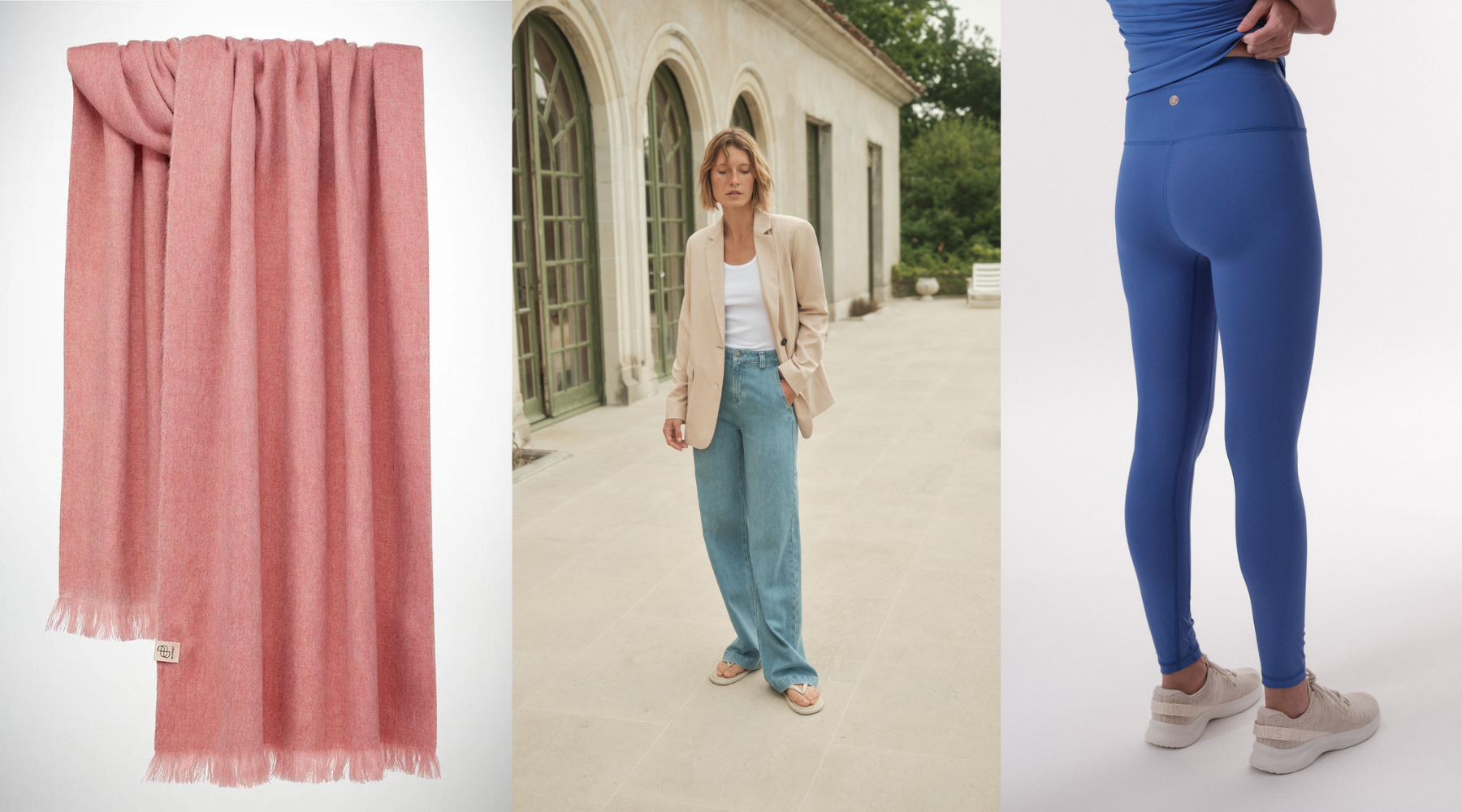When you think of knits, you probably quickly think of chunky knit sweaters. But did you know that most T-shirts are also knitted? So what exactly is the difference between a knit and a fabric? And when to choose a knit and when to choose a weave? Today we will explain to you the basics of knits and fabrics and by the end of this blog you will be able to recognize exactly if your garment is a knit or a fabric.


Knits:
Knitting is a method in which stitches are formed. You get these by putting a yarn in a loop shape, pulling those loops together and forming a stitch that way. If you repeat this, you end up with a cloth that you can then make into a garment using a sewing machine, or the knit is seamless so it comes out of the knitting machine ready to go. This is often done with underwear, sportswear and other seamless garments. A plus that comes with this is that there is little cutting waste, which in turn makes it more sustainable. You can recognize a knit by its V structure. So if you look closely at the fabric of your clothing and you see rows of Vs, chances are it's a knit.
Wondering which garments at Sophie Stone are knits? Check out a selection of Sophie Stone's knitwear below:

1: Alchemist Alane Sweater Plum €119,95,- | 2: Ecoalf Knit Sneaker Sky €89,95,- | 3: ARMEDANGELS Marlinaa Sweatvest €99,95,- | 4: Swedish Stockings Anna 40 dernier black €25,95,- | 5: Bask in the Sun Ibon Sweater Gray €89,95,| 6: People Tree Lace Bra black organic cotton €30,95,- | 7: People Tree Lace Hipster black organic cotton €13,95,- | 8: ARMEDANGELS Saamu socks pink €13,95,- | 9: Lanius yoga leggings lavender €79,95,- |
Tissues:
Fabrics always consist of 2 threads, namely the warp threads (these lie lengthwise) and the weft threads (these lie widthwise). These are then "woven" on a loom. The way in which warp and weft threads cross in a fabric proceeds in a regular pattern. This pattern is called the binding. This binding determines the appearance and also the strength of the garment. For example, you can choose a twill weave. This can be recognized by the diagonal lines on the fabric. This is a strong weave and is therefore often used in jeans, for example. You can recognize a weave by seeing 2 yarns alternating up and down. How often one yarn goes up and how often the other yarn is under depends on the binding.
Wondering what garments are weaves at Sophie Stone? Check out a selection of Sophie Stone's woven garments below:

1: Alchemist Molly blouse white €129,95,- | 2: ARMEDANGELS Elodiaa multi floral skirt €89,95, | 3: Bufandy scarf sky blue €47,95,| 4: J label Shanti Blouse black €89,95,| 5: Lanius blazer oatmilk €279,95,- | 6: ACBC Sneaker run white lilac €189,95,- | 7: J label Meena pants purple shell €119,95,- | 7: ARMEDANGELS jeans aarjo smokey blue €99,95,- |
Knit vs. Weave:
- More Elastic: A major advantage of knitwear is that it is generally more elastic than fabrics. This is because the yarns lie in loops rather than stretched, making the knit easier to stretch. This also makes it less likely to crease because the yarns spring back, as it were. For this, an elastic yarn must be added to the knitted fabric, otherwise you run the risk that the knit will not spring back and will lubble. Because of its elasticity, a knitted fabric is very suitable for garments that have to fit closely, such as sweaters or socks.
- Stronger: Fabrics are stronger than knits.
- Insulating: knits insulate better and thus are generally warmer than fabrics. This is due to the open structure of a knit. This in fact ensures that many places with stagnant air are present. Because of the open structure, knits are more transparent and require coarser yarns to achieve the same coverage.
- Shrinkage: Knitted fabrics are more likely to shrink than woven fabrics. Of course, this does vary by product and by the material used for the garment.
Non woven:
If you think you now know everything about textiles, that is not quite the case. In fact, in addition to knits and fabrics there is another kind, the non-wovens. This is clothing that, as the name implies, is not woven. In this case, there are no yarns involved and the fibers are joined together in a different way.



